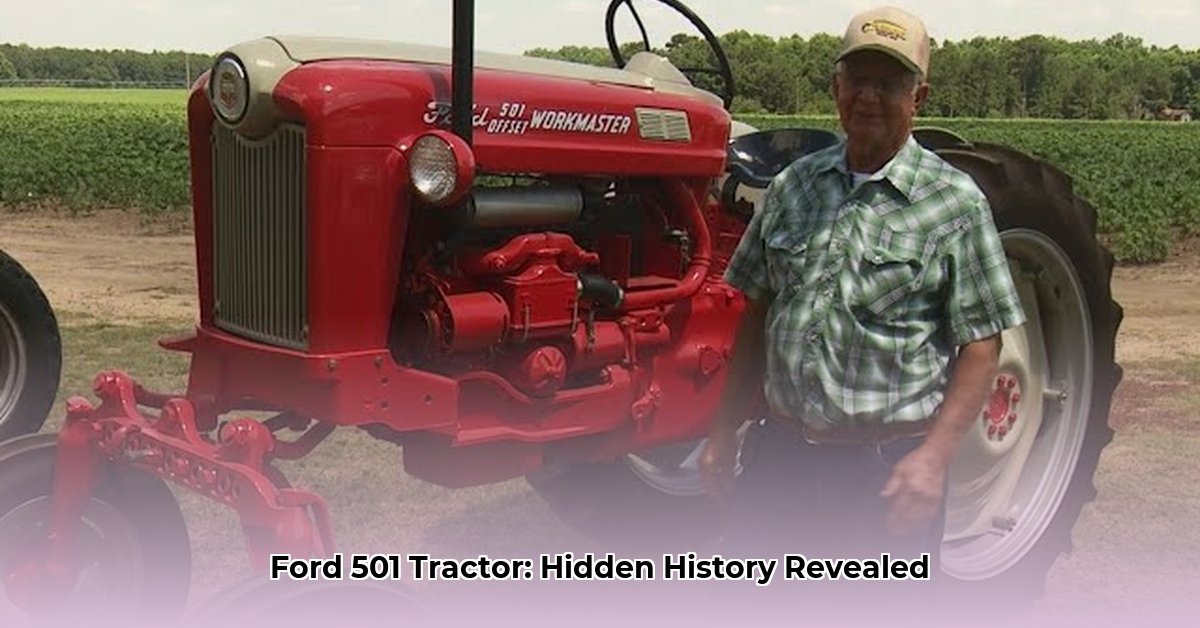
Ford 501 Tractor: Unearthing a Slice of Agricultural History (1959-1962)
The Ford 501 tractor. The name itself evokes images of American farm life in the late 1950s and early 1960s—a period of remarkable transformation in agriculture. While many tractors from that era enjoy well-documented histories, the Ford 501 remains surprisingly elusive, a quiet giant in the annals of farming technology. For more on similar Ford tractors, check out this resource on the Ford 335. This article aims to illuminate this intriguing machine, piecing together its story from the limited information available. Why is this tractor so mysterious? What can we learn by studying its absence from readily available farm machinery records?
The Farm Scene: A Time of Great Change (Late 1950s – Early 1960s)
The American countryside of this period witnessed a rapid adoption of new technologies, driving farmers to seek greater efficiency and larger harvests. John Deere and International Harvester, among others, engaged in fierce competition, constantly innovating to provide farmers with superior tools. This was a pivotal era, where the measurement of a farm's power shifted from animal horsepower to the raw engine power of tractors. The Ford 501, though less celebrated than some of its contemporaries, undoubtedly played a role in this agricultural revolution. Indeed, the very scarcity of information about the 501 highlights the challenges historians face when reconstructing incomplete historical records of technological development.
What We Know (For Sure!) About the Ford 501
Concrete information about the Ford 501 is frustratingly scarce. Production spanned from 1959 to 1962. Beyond these production years, detailed specifications are maddeningly difficult to find. This lack of readily available data presents both a challenge and an opportunity to investigate the often-overlooked narratives of less-celebrated agricultural machinery. How can we piece together this fragmented data to understand the Ford 501's place within the overall history of tractor development?
The Detective Work: Making Educated Guesses
To fill the knowledge gaps, we must engage in a bit of historical detective work. Given the timeframe, we can make some reasoned inferences. As a Ford product, the 501 likely shared design characteristics with other Ford tractors of the period. A gasoline engine was probably under the hood, as diesels were still gaining widespread adoption at this time. A hydraulic system for lifting implements was likely standard, and manual transmissions were the norm then. However, it's crucial to emphasize that these are informed hypotheses, not definitively established facts. We are reconstructing a partial picture from fragmented evidence.
The Ford 501 Today: A Rare Find
Encountering a Ford 501 in the present day is akin to discovering a historical artifact. Its scarcity underscores its elusive nature. Restoring one would be a substantial undertaking, requiring significant skill, time, and dedication from a passionate tractor enthusiast. This very rarity fuels its appeal to collectors and history buffs.
The Mystery Continues: A Call for Further Research
The limited information regarding the Ford 501 highlights a substantial gap in the historical record of agricultural machinery. Further research is crucial to complete the story. This involves exploring Ford’s archives, delving into farm journals and magazines from the era, and tracking down individuals with firsthand memories of the tractor. The oral histories of those who worked with the 501 could prove invaluable in reconstructing its operational characteristics and its impact on the lives of farmers.
Where to Begin: Pathways to Uncover the Past
The quest to better understand the Ford 501 requires a multi-faceted approach:
- Ford Archives: Searching Ford's archives could reveal production records, design documents, and marketing materials offering crucial technical specifications.
- Period Publications: Examining agricultural journals and trade magazines from the 1950s and 60s (accessible through online archives and libraries) might unveil contemporary reviews, advertisements, and comparisons with rival models.
- Collectors and Restorers: Connecting with those who own or are restoring Ford 501s through online forums and tractor clubs could yield operational insights, personal accounts, and parts information.
- Oral Histories: Interviewing individuals who used or remember these tractors may provide invaluable anecdotal evidence and insights into their daily operation.
The Ford 501 remains an intriguing enigma, a captivating piece of agricultural history waiting to be fully revealed. It represents a blend of innovation, hard work, and the ongoing mechanization of farming in America. Its incomplete story serves as a reminder of the importance of preserving and investigating the often-overlooked aspects of technological and agricultural history.